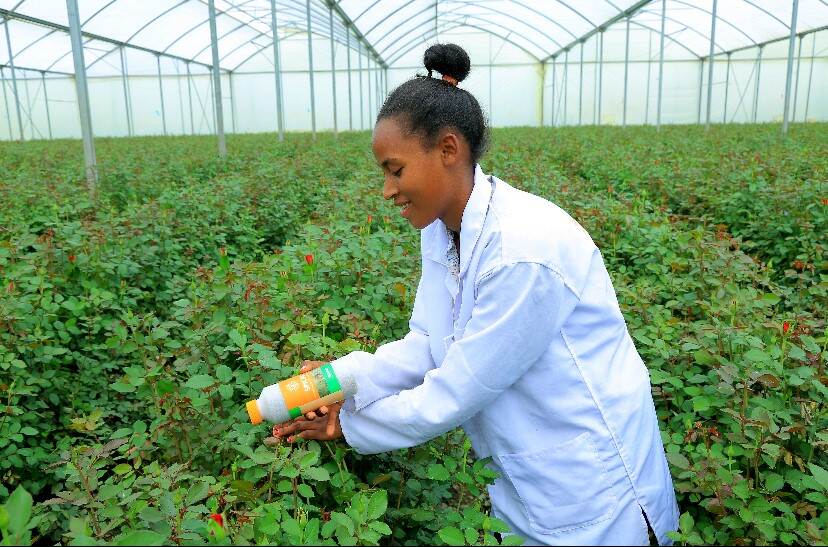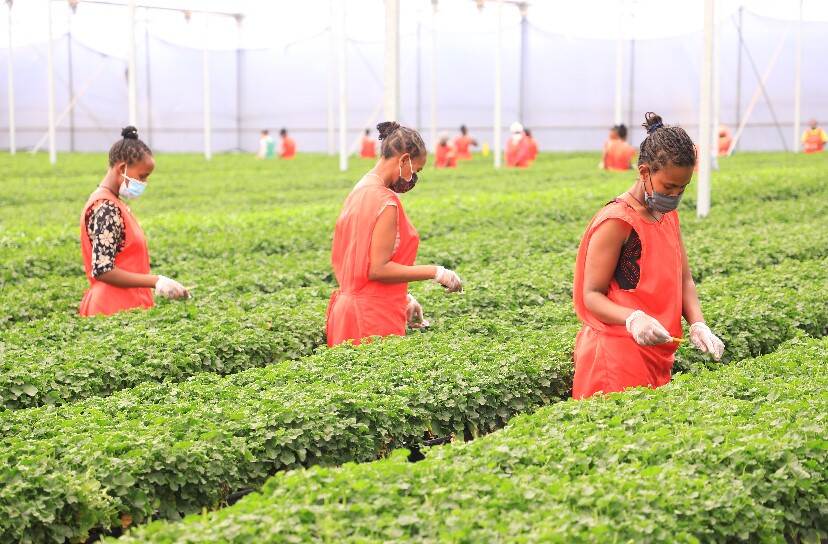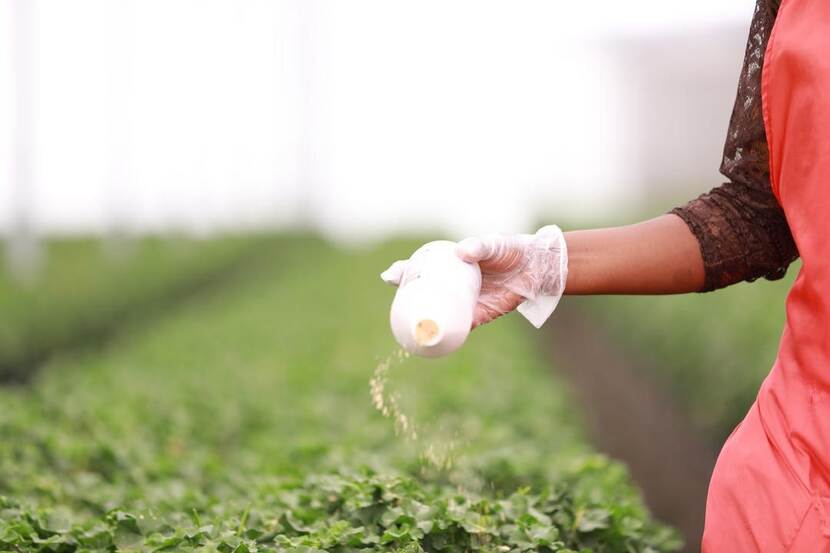Unlocking the potential of biological control in Ethiopian agriculture
At the end of 2023, the Agriculture Team of the Netherlands Embassy commissioned a comprehensive report on the utilization and future prospects of biological control in Ethiopia to shed light on the current state of biological control practices in the country and identify opportunities for its further development.
The report encompasses various categories of biological control products:
- Macrobials: These include insects such as Phytoseiulus and Amblyseius, utilized for controlling pests like mites in greenhouse environments, along with bumblebees for enhancing crop pollination.
- Microbials: Fungi like Trichoderma, Beauveria, and Metarhizium, which combat soilborne pests and diseases.
- Botanicals: Derived from plants like pyrethrum and neem, as well as essential oils, targeting pests and diseases.
- Semio-chemicals: Hormones used in traps or baits, like pheromone traps for controlling pests such as the false codling moth.
While macrobials and microbials find extensive use in the floriculture industry, botanicals and semio-chemicals are also applied in open-field cultivation. In Ethiopia, botanicals and semio-chemicals can be registered through regular pesticide registration systems, whereas macrobials and microbials are limited to protected cultivation like greenhouses. A new directive, the Directive on Biopesticides, is in development to streamline the registration process for macrobials and microbials.
Promoting Integrated Pest Management (IPM) and Biological Control in Ethiopian Agriculture
Biological control products are predominantly employed in Ethiopia's floriculture industry. With the European Union emphasizing to reduce synthetic pesticide use through initiatives like the Green Deal, many companies are adopting biological control methods. Approximately 15-20 companies, mostly Dutch-owned, integrate biological control products into their farm management. Notably, the Ethiopian Horticulture Producers Exporters Association (EHPEA) has been instrumental in supporting validation trials for biopesticides since 2017, resulting in successful registrations for the floriculture industry.
The rise of bio-led Integrated Pest Management (IPM) farms signals a shift towards biological solutions, although most greenhouse farms still rely on chemical-based approaches. Challenges to wider adoption include the knowledge-intensive nature of biocontrol methods and the absence of premium prices for pesticide reduction. However, with the EU initiative to reduce use of pesticides, there's potential for increased uptake of biological solutions in the future.

Biological control methods are integral to the broader framework of integrated pest management (IPM), gaining traction in Ethiopia. SNV-HortiLIFE and the Amhara Regional Agricultural Research Institute (ARARI) have spearheaded training initiatives on IPM, supported by the agricultural team of the Netherlands Embassy. ARARI has developed an IPM manual in Amharic, utilized in training sessions for agricultural experts at various levels. Model farmer programs have been initiated, focusing on key crops like tomato, pepper, onion, potato, mango, and avocado. Biological control forms a crucial component of IPM, complemented by cultural practices and minimal use of synthetic pesticides. To further advance IPM adoption, an 'IPM Coalition' has been established, comprising government organizations, NGOs, and educational institutions. This coalition aims to foster collaboration at regional, zonal, and woreda levels.
The introduction of Carmine cochineal serves as a cautionary tale in the context of biological control in Ethiopia. Initially supported by an FAO project and implemented by Mekelle University, cochineal was released for commercial use after meeting regulatory requirements. However, it later emerged as an invasive pest, infesting thousands of hectares of cactus fruit, a crucial food security crop. This case underscores the importance of stringent regulatory measures, particularly for non-indigenous insects in open-field agriculture.

Market Dynamics and Opportunities
Analysis of import values reveals a growing market for biological control products in Ethiopia. While import values for macrobials fluctuate, with Kenya dominating the market, there's a steady increase in export values from key production countries like Kenya, the Netherlands, and the United Kingdom. Although specific import values for microbials, semio-chemicals, and botanicals are challenging to ascertain due to categorization issues, estimates suggest a total market size of close to USD 5 million annually for biopesticides in Ethiopia.
The European Union's Green Deal (EGD) presents significant implications for Ethiopia's export horticulture sector. With targets to reduce chemical pesticide use by 50% by 2030, there's a heightened emphasis on IPM and biological control. However, these targets were set on hold early 2024, due to severe pressure from the European farmers community. The EU's approval of over 60 microorganisms for agricultural use reflects a real shift. Programs like 'Fit for Market' and 'Better Training for Safer Food' aim to support third countries in adapting to these new requirements, emphasizing the importance of alternative pesticides and integrated pest management. While challenges persist, including regulatory gaps and invasive species risks, initiatives driven by both local and international stakeholders offer promising pathways for enhancing agricultural sustainability and meeting evolving market demands, particularly in light of initiatives like the EU's Green Deal.
Exploring Business Opportunities in Biopesticides Production in Ethiopia
Looking at the wider East African region, the analysis shows the huge increase in uptake of biological products especially in the floriculture industry as well as in the export fruits and vegetables sector. Turnover and use of biological control has more than tripled in the last five years and more and more (export oriented) companies are shifting to integrated pest management. The necessity for this shift has been further motivated by the European Union’s Green Deal, which plan was to restrict the use of synthetic pesticides by 50% by 2030. As such, the use of biological control products is expected to further increase in the coming years. Additional drivers for further increase of biological control products are the emergence of new pests like false codling moth, tuta absoluta and fall army worm. These pests cannot be contained by synthetic pesticides alone and require a more holistic pest management approach.
Companies that were communicated for the study show interest in producing and selling biopesticides in Ethiopia, citing factors like the availability of diverse microbials for isolation and production. Ethiopia offers lower labor costs and more advantageous flight destinations and freight costs. However, key challenges include unclear regulations for biopesticide production, licensing processes, and difficulties with forex repatriation.
Previous initiatives, like EHPEA's pilot project on Phytoseiulus production, demonstrated feasibility but faced hurdles in commercialization. Kaffa Biotech's research on Trichoderma species for coffee wilt disease shows promise, though products are still in the research stage pending regulatory approval.
Companies currently operating in Ethiopia estimate that up to 75% of biopesticide imports could be replaced by local production, potentially generating a turnover of USD 3-4 million. Products in high demand, such as Phytoseiulus, Amblyseius, Trichoderma, Beauveria, Metarhizium, and pheromone traps, are likely candidates for local production due to benefits like lower costs and better availability.
Innovative funding from organizations like SNV-HortiLIFE, USAID MS4G project, and RVO's DHI instrument could facilitate investments in biological control products. Initial investments for small-scale production facilities could start as low as USD 150,000. A SWOT analysis highlights opportunities such as growing demand and a large home market, strengths like abundant microorganisms and favorable labor costs, but also threats like security concerns and regulatory uncertainties.
